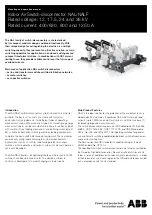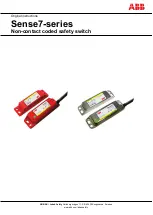
282
C
HAPTER
17: N
ETWORK
P
ROTOCOL
O
PERATION
■
A DHCP client extends its IP lease period
There is a time limit for the IP addresses leased to DHCP clients. The DHCP server
shall withdraw the IP addresses when their lease period expires. If the DHCP client
wants to continue use of the old IP address, it has to extend the IP lease.
In practice, the DHCP client, by default, shall originate the DHCP_Request message
to the DHCP server right in the middle of the IP lease period, to update the IP
lease. If the IP address is still available, the DHCP server responds with the
DHCP_ACK message, notifying the client that it has got the new IP lease.
The DHCP client implemented on the Switch supports automatic IP lease update.
DHCP Relay
The DHCP described above applies only when DHCP clients and server(s) are in the
same subnet, and it does not support trans-segment networking. To achieve dynamic
address configuration, you would have to configure a DHCP server for each subnet,
which is not a practical solution. Introduction of DHCP relay has solved this problem:
the clients in a LAN can communicate with DHCP servers in another subnet through
DHCP relay, to get valid IP addresses. Then DHCP clients of multiple different
networks can share a DHCP server, which saves networking cost, as well as facilitating
centralized management. A typical DHCP relay application is shown in Figure 66.
Figure 66
Typical DHCP Relay Application
DHCP Relay works on the following principle:
■
When the DHCP client starts and initializes DHCP, it broadcasts the request
message to the local network.
■
If there is a DHCP server on the local network, it can begin DHCP configuration
without requiring a DHCP relay function. If not, the local network device
configured for DHCP relay, upon receiving the broadcast message, will forward the
message to the DHCP server on the specified network.
■
The DHCP server determines a correct configuration based on the information
from the client and returns the configuration information back to the client
through DHCP relay.
In fact, several such interactions may be needed to complete a DHCP relay
configuration.
Ethernet
Internet
DHCP client
DHCP client
DHCP client
DHCP client
Switch ( DHCP Relay)
DHCP Server
Summary of Contents for 5500 SI - Switch - Stackable
Page 24: ...24 ABOUT THIS GUIDE...
Page 50: ...50 CHAPTER 1 GETTING STARTED...
Page 54: ...54 CHAPTER 2 ADDRESS MANAGEMENT CONFIGURATION...
Page 78: ...78 CHAPTER 3 PORT OPERATION...
Page 88: ...88 CHAPTER 4 XRN CONFIGURATION...
Page 122: ...122 CHAPTER 8 VLAN VPN CONFIGURATION...
Page 216: ...216 CHAPTER 15 SSH TERMINAL SERVICES...
Page 268: ...268 CHAPTER 16 IP ROUTING PROTOCOL OPERATION...
Page 308: ...308 CHAPTER 17 NETWORK PROTOCOL OPERATION...
Page 349: ...349...
Page 350: ...350 CHAPTER 18 MULTICAST PROTOCOL...
Page 522: ...522 CHAPTER 22 FILE SYSTEM MANAGEMENT...
Page 584: ...584 CHAPTER 30 PASSWORD CONTROL CONFIGURATION OPERATIONS...
Page 600: ...600 CHAPTER 31 MSDP CONFIGURATION...
Page 614: ...614 CHAPTER 32 CLUSTERING...
Page 670: ...670 CHAPTER C AUTHENTICATING THE SWITCH 5500 WITH CISCO SECURE ACS...
















































